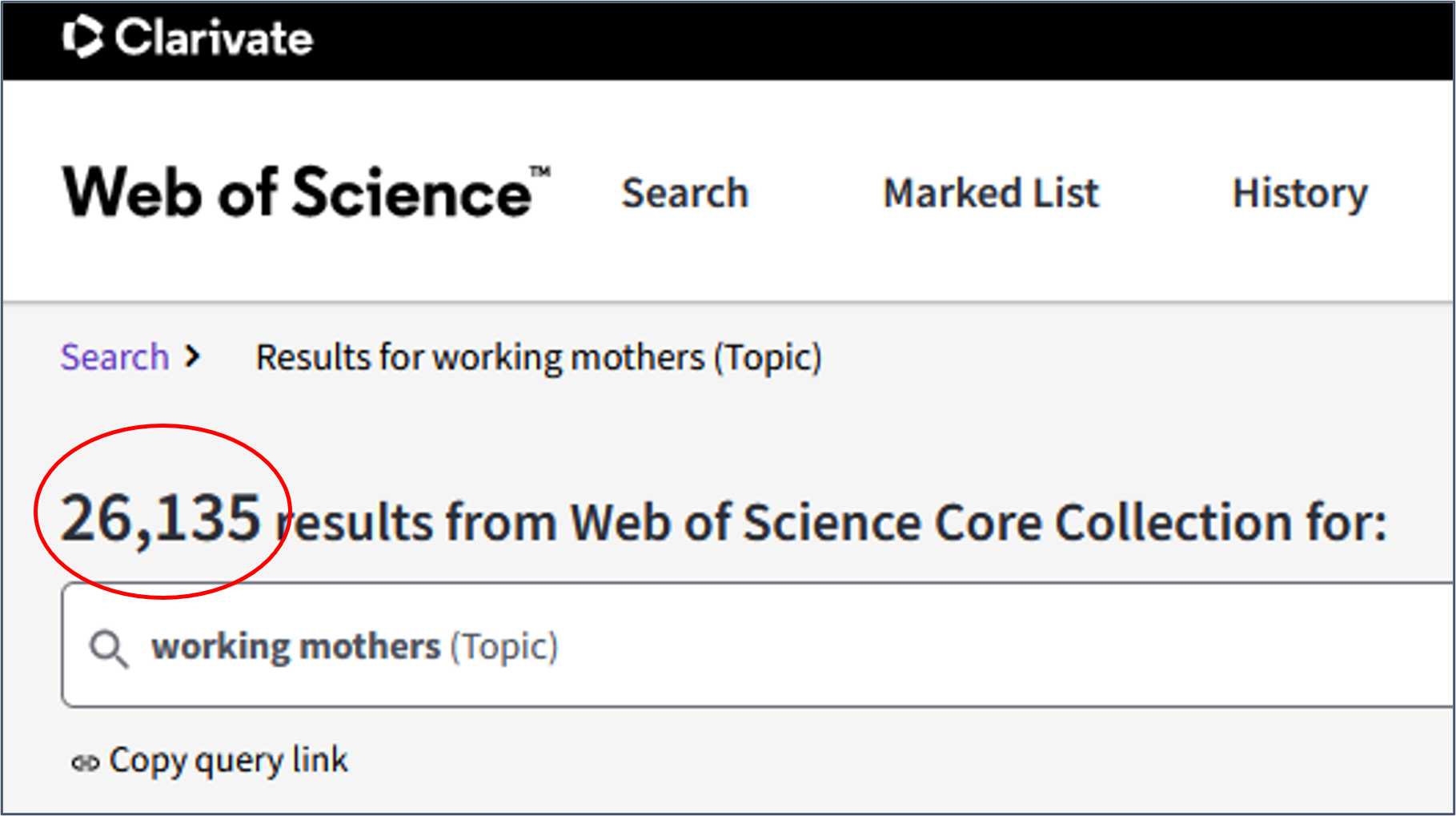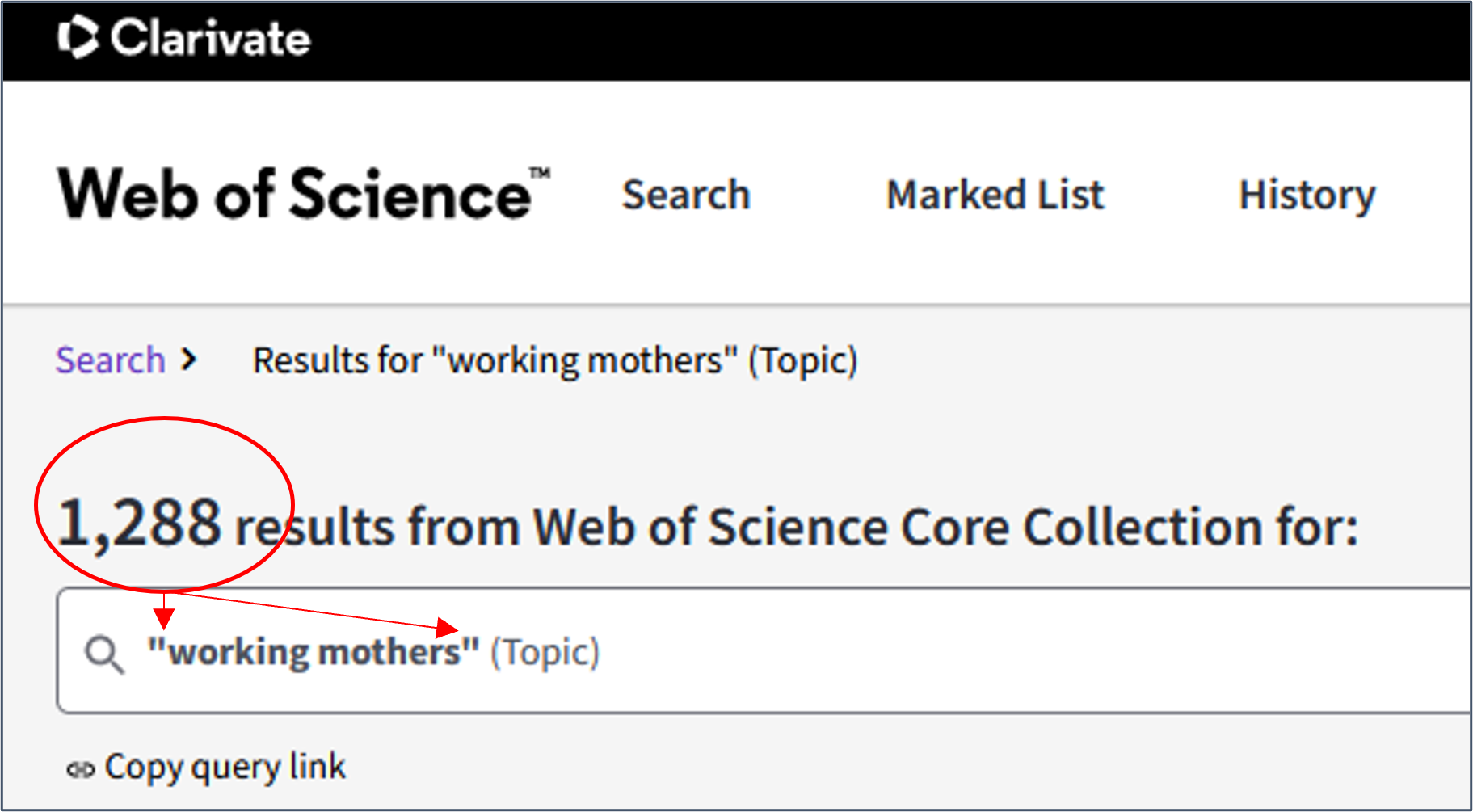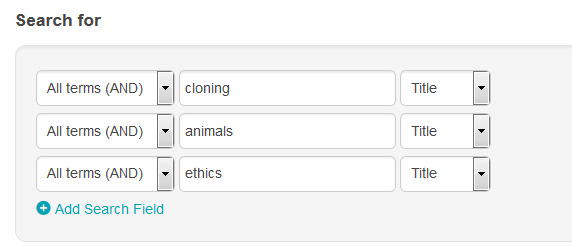Search Techniques
Database functionalities and general principles of search techniques, like truncation, phrase searching and using Boolean operators are in principle the same for every search system. Knowing these basic rules is a key element to make searches work properly. In this section search techniques are explained using examples.
Truncating a search term
Truncation, also called stemming, is a technique that broadens your search to include various word endings and spellings.
- To use truncation, enter the root of a word and put the truncation symbol at the end.
- The most common truncation symbol is * (asterisk). The database will return results that include any ending of that root word.
For example: child* gives you child, children, childhood etc.
OBS! Many databases can automatically recall some inflected forms of words, typically singulars / plurals and sometimes conjugations too. Also American-British spelling variations are often taken care of by the system.
For example: color might retrieve also color, colors, colour, colours, coloring, colouring
Still, if a term is not a “common” word, plural might not be regognised, for instance peatland, peatlands. Observe the result list, if it includes the plurals or not, and use truncation if needed.
Usually using a phrase search will eliminate all automatic stemming.
Wild cards
Similar to truncation, wildcards substitute a symbol for one (or zero) letter of a word.
- Wildcard is useful if a word is spelled in different ways, but still has the same meaning.
- Depending on a database, a wildcard may be ?, %, # etc.
For example: organi?ation, colo#r
OBS! Truncation / wildcard symbols vary by database. Check the help screens to find out which symbols are used.
Watch the video “Truncation & wildcards” (2:40) by University of Essex Library (link opens in Youtube in a new tab).
Phrase searching means searching a database for words in a precise order. Different databases interpret searches differently. Some very few databases assume that two words next to each other should be searched as a phrase automatically. Most of the databases will put a boolean operator AND between two words.
In general, the easiest way to search for terms next to each other is to enclose them in quotation marks: “global warming”, “drunk driving”.
See the example in the database Web of Science below: the first search working mothers WITHOUT quotation marks gives 26 135 results:

The second search “working mothers” WITH quotation marks gives 1 288 results: 
You may watch the same example in a short video (1:14) by Cannon Library (Link opens in Youtube in a new tab).
Boolean operators form the basis of mathematical sets and database logic. They connect your search words together to either narrow or broaden your set of results. The three basic Boolean operators are: AND, OR, and NOT.
Use “AND” in a search to:
- tell the database that ALL search terms must be present in the resulting records
- narrow your results
For example: cloning AND animals AND ethics:


Use “OR” in a search to:
- connect two or more similar concepts (synonyms)
- broaden your results, telling the database that ANY of your search terms can be present in the resulting records
Use “OR” in a search to:
- connect two or more similar concepts (synonyms)
- broaden your results, telling the database that ANY of your search terms can be present in the resulting records
- connect two or more similar concepts (synonyms)
- broaden your results, telling the database that ANY of your search terms can be present in the resulting records
For example: Tinder OR “mobile dating”:




Use “NOT” in a search to:
- exclude words from your search
- narrow your search, telling the database to ignore concepts that may be implied by your search terms


Use “NOT” in a search to:
- exclude words from your search
- narrow your search, telling the database to ignore concepts that may be implied by your search terms


Use “NOT” in a search to:
- exclude words from your search
- narrow your search, telling the database to ignore concepts that may be implied by your search terms

Use “NOT” in a search to:
- exclude words from your search
- narrow your search, telling the database to ignore concepts that may be implied by your search terms
Use “NOT” in a search to:
- exclude words from your search
- narrow your search, telling the database to ignore concepts that may be implied by your search terms
Use “NOT” in a search to:
- exclude words from your search
- narrow your search, telling the database to ignore concepts that may be implied by your search terms
For example: students NOT “pre-school students”
Combination of ANDs and ORs
Databases usually recognize AND as the primary operator, and will connect concepts with AND together first. If you use a combination of AND and OR operators in a search, enclose the words with OR together in parentheses: students AND (facebook OR “social media”). In many databases you may use the advanced search form to build up your search with drop-down menu (see the examples above). Write all the Boolean operators in CAPITAL LETTERS.
Watch a video “Using Boolean operators” (2:14) by John M. Pfau Library (CC BY 4.0, the link opens in Youtube in a new tab).
Proximity searching means that you are searching for words that are close to each other, but not necessarily next to each other. The maximum number of intermediate words between the search words can be chosen.
The idea is that when the words appear near, they are more likely to have a contextual connection. Using the normal AND-operator may return irrelevant results, especially when you are searching longer text paragraphs, like abstract or full-text – the terms can occur on a page or in an article without any actual association.
On the other hand, phrase searching can sometimes be a too limiting search condition, because it doesn’t allow any extra words between the search terms, even when there could be some. With proximity operator it is also possible to search terms in reverse order, like terms age estimation and estimation of age.
An example from Web of Science database. The distance between the search terms is from zero to three. Command:
infrared NEAR/3 spectroscopy
The outcome contains results like these:

The command NEAR/3 allows the maximum of three additional words between the actual search terms. As seen in the example, the number of extra words can vary between 0 to 3. You can choose the number of extra words yourself.
Thus proximity search is a kind of an intermediate form between AND-operation and phrase searching.
The form of proximity operators is not uniform like Boolean operators. Many databases use the command:
NEAR/n or N/n or Nn (where n= max number of words between)
Some other possibilities:
SAME or W/n or PRE/n or ADJ
Check the valid syntax from each database’s Search tips.
Watch a video about the proximity operators (1:38) by QUT Library (the link opens in Youtube in a new tab).
(4/2025 LP)
< Previous page: Search terms
Next page: Basics of using databases >